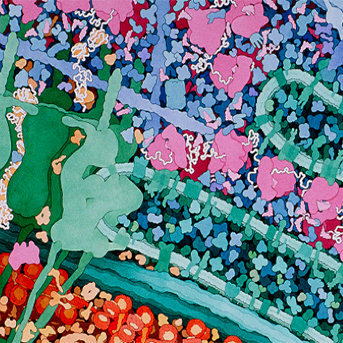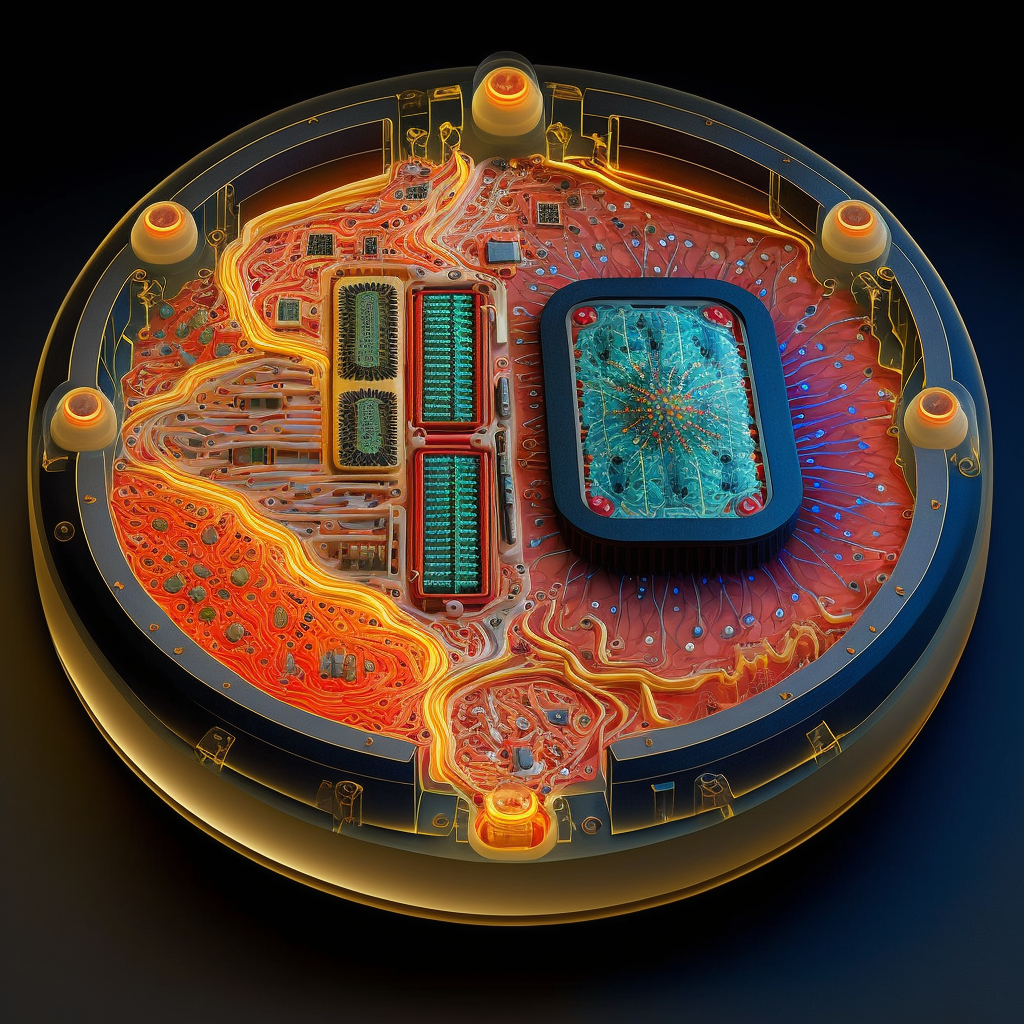Asimov Labs
Today, we announced that the MIT-Broad Foundry team has joined Asimov and set up shop in our main office. This move happened a while ago, but we held off on announcing it until now. We are also retiring the name “Foundry” and switching over to Asimov Labs. The rebrand is inspired by the pioneering work of historic teams at Bell Labs, HP Labs, and Xerox PARC, for reasons that we hope will become clear in this blog.

The MIT-Broad Foundry formed in 2012. Over the next decade, its team designed and engineered pathways and living cells to make over 1,200 different molecules and materials, as well as hundreds of genetic devices, such as circuits and sensors. The Foundry was designed to take on wildly different challenges under tight time constraints, like making ten different molecules in 90 days without knowing them ahead of time.
By retiring the Foundry name and shifting over to Asimov Labs, we are reimagining how high-throughput experiments can drive biological progress. Our goal with Asimov Labs is not to use robots to screen thousands of strains, but rather to solve genetic design. We want to reduce the implementation risk in engineering a biological system — a bacterium, mammalian cell, or anything else — to zero.
We think of genetic design as applying biophysical insight to compose and layer genetically-encoded functions to achieve a cellular behavior. It means working backwards from, say, synthetic photosynthesis or the eradication of a cancerous cell in the body to a DNA sequence that encodes all the biochemistry to make it happen. We’re currently able to design systems with 10-100 discrete genetic functions in mammalian cells; but not with zero implementation risk. Design tools and models help, but there is still a lot of trial and error that we are trying to minimize. Our goal is to engineer increasingly complex behaviors until, ultimately, we can design entire genomes.
This is our moonshot. It may sound outlandish, but our ability to design large and complex circuits using computer-based models has improved massively in the last decade. And now, Asimov Labs will help us move even faster.
Moonshot
In the mid-1990s, it often cost more than a thousand dollars to sequence one gene. To cut costs, universities set up their own DNA facilities and offered Sanger sequencing services to academics. They focused on the mundane sequencing needed to run a lab — a student’s plasmid or enzyme mutant, for example.
But as the Human Genome Project took off, these academic facilities saw an opportunity to come together and advance biology in ways that hadn’t been done before. Today, we take it for granted that we can look up any gene in thousands of different species. But twenty-five years ago, this was a pipe dream, realized only because big thinkers asked the right "what-if" questions at the right time.
Twenty universities and research centers drafted the initial sequence of the human genome. The Whitehead Institute/MIT Center for Genome Research, which later became the Broad Institute, sequenced much of the mouse genome, together with scientists at 26 other institutions. That work was published in 2002. The Broad Institute later led an effort to sequence 1,000 human genomes and, after four years of work, surpassed that goal and identified 38 million single-nucleotide differences across 14 human populations.
In other words, academic sequencing centers went after big moonshot projects. This is the context in which biofoundries first emerged. When synthetic biology ramped up in the mid-2000s, many people thought that some projects would be too big for individuals to tackle. Robots would be needed, they thought, to engineer biology in sophisticated ways.
An early idea for a synthetic biology “Foundry” came in 2009, when Chris Voigt (MIT; also an Asimov co-founder) and Michael Fischbach (Stanford) proposed “a high-throughput natural product discovery pipeline,” called FabPharm, at the University of California - San Francisco. They wanted to use robots to assemble genes and discover valuable molecules in nature. Their work built on an earlier effort by Drew Endy (Stanford) and Adam Arkin (UC Berkeley) to create a DNA factory that could print and screen genetic parts.
There are now dozens of biofoundries around the world, including several at companies. Many of them use robots and automated tools to parallelize microbial genome editing, to build genomes, or to coax microbes to make molecules. The Edinburgh Genome Foundry can do more than 2,000 DNA assembly reactions each week, which is 20-times the throughput of a lone scientist. The iBioFab Foundry at the University of Illinois can run 192 CRISPR-Cas gene-editing experiments at the same time.
Still, it’s rare for biofoundries to go after moonshot projects. They could engineer cells to make every antibiotic found in the human microbiome, or chemically synthesize the entire human genome (see GP-Write) to learn more about how it’s regulated and controlled. Biofoundries have already banded together to do this for the yeast genome. But most others mostly provide small-scale services, such as DNA synthesis or automated experiment pipelines.
Asimov Labs is taking all the capabilities of a typical biofoundry — the robots, people, and high-throughput tools — and applying them to the genetic design moonshot. Our team collects multi-modal measurements on transcription and translation rates, protein folding, protein-protein interactions, and energy consumption across different cell types for thousands of different DNA sequences.
These data are then used to build biophysical cell simulations, which incorporate into generative design algorithms: think of it as a "compiler" that can automatically design multi-gene plasmids. We’re also training deep-learning models to predict DNA functions from sequences in vivo. As these models mature, we’ll give them to scientists via Kernel, our software to design, simulate, and optimize biological systems. We’re inspired by Ivan Sutherland’s work in creating Sketchpad, the first CAD program, in 1963. Sutherland went on to pioneer human-computer interactions at Xerox PARC.
Our ultimate goal is not only to use computers to design DNA sequences that work as expected in individual cells, but to do the same in complex environments at scale, such as large-volume bioreactors.
Again, this is a moonshot; a work in progress. But our ability to design living systems is expanding quickly, and that gives us hope.
Plausible
It is rare for a genetic design — a logic circuit, metabolic pathway, or anything else — to work the first time. Cells are complex and not fully understood, and that’s why biological engineers often test dozens to thousands of designs to find one that works.
But as we try to engineer more complex systems, from large metabolic pathways to groups of cells that work in symphony, we don’t think high-throughput experiments will find solutions. Instead, we should try to understand biology so deeply that one could predict its behaviors before any engineering begins.
We have a ways to go, but it's undeniable that our ability to design biology is improving fast.
Just look at prime editing, a ‘search-and-replace’ genome editing tool that can insert, delete, or swap bases in DNA. These proteins were made through genetic design, even if they’re not branded that way. The prime-editing protein was made by fusing a Cas9 nickase to a reverse transcriptase taken from a virus. This fusion protein was tested in cells and then rationally engineered to make better variants. Prime editing was not developed by brute force screening; it came from deep, molecular insights.
Asimov Labs has also used AI models and simulations to make tissue-specific promoters for gene therapies. We did not do any screening for that work. The same team also developed a codon optimizer that outperforms every alternative on the market, at least for antibody production. A codon optimizer swaps codons in a gene sequencing to boost gene expression, without changing amino acids in the final protein.
And finally, Asimov was founded, in part, based on work at MIT that produced Cello, a programming language that interfaces with E. coli models to design genetic circuits. At the time of its publication, Cello had designed the most complex genetic circuits ever built — ten proteins that work together to encode complex logic functions — with a 75% first-try success rate. In other words, Cello directly outputs a DNA sequence based on a user specification that works as expected three-quarters of the time.
For a follow-up paper, thousands of high-throughput experiments enabled us to build reliable models to extend Cello to sequential logic, a form of circuit that in real computers underpins memory, timing, and feedback.
So this is the future Asimov Labs is pushing towards. We’re fusing experimental data with biophysical models to design biology in silico. All of this is about building the foundation on which we hope to solve genetic design. We’ll be sure to update you on our progress in future blogs.

.png)


